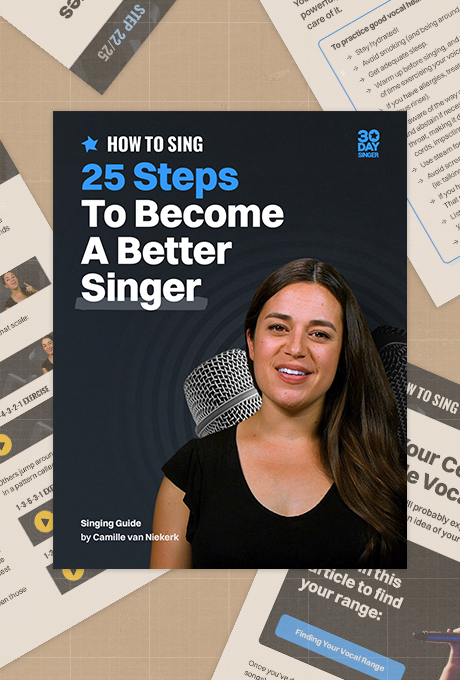3 Blues Vocal Riffs You Can Use Anywhere
August 22, 2025
Learning blues riffs on guitar or voice is one of the best ways to build confidence, train your ear, and add some soul to your practice.
In this lesson, we start with a riff you’ll recognize from I’d Rather Go Blind by Etta James. Even though it’s made up of only three pitches—C, B, and A—it packs a ton of emotion. High voices can sing this riff starting on C4, while lower voices can drop an octave to C3. Beginners can break it into two simple sections, then tie them together once comfortable. To keep your notes clear, try singing on consonants like “do” or use a glottal onset (like starting the word “apple”) for precision.
Next up is a blues riff straight from B.B. King’s The Thrill Is Gone. This one uses four descending pitches, which makes it straightforward but still tricky to nail cleanly. Again, you can adjust the octave depending on your vocal range. Practicing slowly, then gradually picking up the tempo, helps keep the pitches distinct. If the tones start to blur, singing with syllables like “doo” or “dodo” can give you the clarity you need.
Finally, we land on the iconic bass line from Albert King’s Born Under a Bad Sign. You’ll also hear this riff influence in modern artists like Yebba. This pattern can be split into halves for practice, then built up for speed and smoothness. Depending on your range, you can start on F#3 or F#4, making it versatile for both high and low voices.
Whether you’re a guitarist looking to internalize blues patterns or a singer strengthening pitch accuracy, these riffs are perfect exercises. Practice them slowly, repeat with focus, then challenge yourself by picking up the tempo. With consistent practice, you’ll sound more confident and bluesy in no time.


